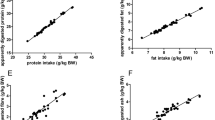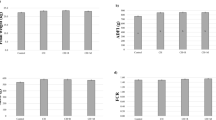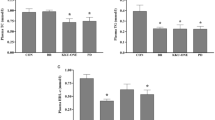Abstract
THE histological changes produced by the ingestion of DDT have been described in numerous publications, there being some controversy over the minimum dietary level producing detectable changes1. There is, however, little knowledge of the biochemical processes involved in the toxicological action of this compound. In an effort to obtain some understanding of these changes investigations are in progress in our laboratory of the tissue enzymes affected by the ingestion of DDT.
This is a preview of subscription content, access via your institution
Access options
Subscribe to this journal
Receive 51 print issues and online access
$199.00 per year
only $3.90 per issue
Buy this article
- Purchase on Springer Link
- Instant access to full article PDF
Prices may be subject to local taxes which are calculated during checkout
Similar content being viewed by others
References
Hayes, W. J., DDT, edit. by Muller, Paul, 2, 106 (Birkhausen Verlag, Basle, 1959).
Bubl, Edward C., and Butts, Joseph S., J. Nutrition, 70, 211 (1960).
Knoche, Ingo, and Hartmann, Fritz, Biochem. Z., 334, 269 (1961).
Willmer, J. S., Canad. J. Biochem. and Physiol., 38, 1449 (1960).
Author information
Authors and Affiliations
Rights and permissions
About this article
Cite this article
TINSLEY, I. Ingestion of DDT and Liver Glucose-6-phosphate Dehydrogenase Activity. Nature 202, 1113–1114 (1964). https://doi.org/10.1038/2021113a0
Issue Date:
DOI: https://doi.org/10.1038/2021113a0
This article is cited by
-
Microsomal epoxidation: Effect of age and duration of exposure to dietary DDT on induction
Bulletin of Environmental Contamination and Toxicology (1969)
Comments
By submitting a comment you agree to abide by our Terms and Community Guidelines. If you find something abusive or that does not comply with our terms or guidelines please flag it as inappropriate.



